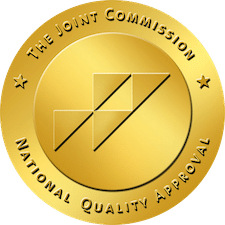About 1% of the U.S. population suffers from obsessive-compulsive disorder, which amounts to roughly 2.2 million American adults.
While everyone has thoughts they’d rather not have sometimes or have habits that make them feel more secure, people with OCD experience obsessive thoughts and behaviors for more than an hour every day.
As you can imagine, this can severely interfere with a person’s normal life and responsibilities. There are a number of different treatment options available when it comes to OCD, but one of the most effective treatments is known as exposure and response prevention or ERP.
Interested in learning more about ERP for OCD? Let’s take a look at what you need to know.
What Is OCD?
OCD stands for obsessive-compulsive disorder. This is a mental disorder in which an individual feels the need to repeatedly perform certain routines (compulsions) or repeatedly things certain thoughts (obsessions) to an extent that impairs general functioning or generates distress.
With OCD, the person isn’t able to control these activities or thoughts for an extended period of time. Some common compulsions include counting things, checking to see if a door is locked, and hand washing.
People who have OCD do not necessarily think that their thoughts or behaviors are rational.
Sometimes, an individual might have what is known as “pure O OCD.” This refers to people who only have obsessive thoughts without ritualistic behavior. It is a common treatment option to use ERP for pure OCD as well as traditional OCD.
What Is ERP For OCD?
ERP stands for exposure and response prevention. It is one of the most commonly recommended therapies to treat OCD.
This is a form of behavioral therapy that aims to free people from the ongoing cycle of obsessions and compulsions so that they can ultimately live a higher-quality life.
The method through which ERP does this is by exposing individuals to situations that provoke their obsessions while additionally helping them break free from their compulsive responses.
Response prevention is absolutely essential because it can help people learn how to accept their situation rather than trying to desperately try to neutralize obsessions with compulsions.
Habituation is the process of getting used to something. ERP helps individuals habituate to the feelings that are stirred up by their obsessions. At the same time, it helps to reduce the amount they rely on compulsions.
OCD is ultimately a certain way of responding to pain by trying to avoid it through expending energy. ERP can help people spend less time and energy trying to avoid pain and help them learn to deal with their feelings.
Why Is ERP the Recommended Treatment For OCD?
A number of studies have found that all people experience some of the intrusive thoughts that are associated with OCD. However, people who don’t suffer from OCD are usually able to write off distressing thoughts as random or strange. People who do have OCD, though, feel compelled to neutralize these thoughts.
With a purely cognitive approach such as cognitive-behavioral therapy (CBT), individuals are asked to challenge their obsessive thoughts. However, this can end up reinforcing the belief in the significance of these thoughts.
When an individual displays behavior that engages with obsessive thoughts, for example, ruminating, being avoidant, or asking for reassurance, it ends up reinforcing the obsession.
ERP helps to prevent those behaviors. In this way, ERP therapy helps people learn that they don’t have to turn to their compulsions and instead are capable of tolerating their distress.
What Are Some of the Other Treatment Options For OCD?
ERP isn’t the only treatment option when it comes to OCD. It is common for a treatment plan to include both medication and psychotherapy.
In order to lessen the symptoms of OCD, an antidepressant or SSRI might be prescribed.
Two of the most common forms of psychotherapy used for OCD are ERP and CBT. CBT is a treatment that can help individuals recognize unhelpful or negative behavior and thought patterns.
Is It Bad to Expose People to Their Triggers?
At first glance, it might seem strange that exposing individuals with OCD to their triggers is strange if not cruel.
However, it is common for people with OCD to have their lives severely disrupted by their repetitive thoughts and behavior. It has been found that helping patients push through the feelings of strangeness and pain can, in the long run, allow them to reach a healthier place.
It is understood within the philosophy of ERP that distress and pain are unfortunate realities in our world. However, individuals often end up creating more pain for themselves by trying to avoid the experience of pain. By helping people learn how to experience their feelings without masking them in additional layers of pain, their quality of life can significantly improve.
It brings to mind the R.D. Laing quote: “There is a great deal of pain in life and perhaps the only pain that can be avoided is the pain that comes from trying to avoid pain.”
Basically, ERP is a process of experiencing short-term pain in order to achieve a long-term and long-lasting gain. It is important that it is done with an experienced clinician that the patient trusts and respects. ERP is most effective when the clinician has training in ERP and experience with OCD.
OCD Treatment with SoCal Sunrise Mental Health
Using ERP for OCD can help you reclaim your headspace and your time. This treatment helps you to learn how to deal with the anxiety that is associated with obsessive thoughts in other, healthier ways.
If you suffer from OCD, there is help for you. OCD doesn’t just go away on its own, so it’s important to seek effective treatment from experienced professionals.
At Southern California Sunrise Recovery Center, we understand how difficult it is to move beyond the cycle of intrusive thoughts and repetitive behaviors.If you are ready to reclaim your life from OCD, contact us today!







